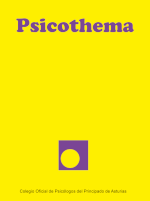Resumen
Antecedentes: los problemas de comunicación y lenguaje constituyen una de las características principales tanto del Trastorno del Espectro Autista (TEA) como del Trastorno Específico del Lenguaje (TEL). El objetivo principal del presente estudio ha sido analizar si ambos trastornos presentan perfiles de lenguaje formal similares. Método: en el estudio participaron tres grupos de 20 alumnos cada uno, divididos en TEA, TEL y Control, equiparados en las variables edad y CI. A todos los participantes se les administró el test estandarizado CELF-4 para evaluar sus habilidades lingüísticas. Resultados: no existen diferencias significativas en lenguaje entre los grupos TEL y TEA, con tamaños del efecto prácticamente nulos. Las diferencias se establecen entre los grupos TEL y TEA cuando se les compara por separado con el grupo Control, obteniéndose un tamaño del efecto grande. Conclusiones: se produce un solapamiento en los perfiles lingüísticos entre niños con TEL y TEA. En consecuencia, se confirma la similitud en lenguaje comprensivo y expresivo, así como en la producción morfosintáctica y léxico-semántica.Descargas
Los datos de descargas todavía no están disponibles.
